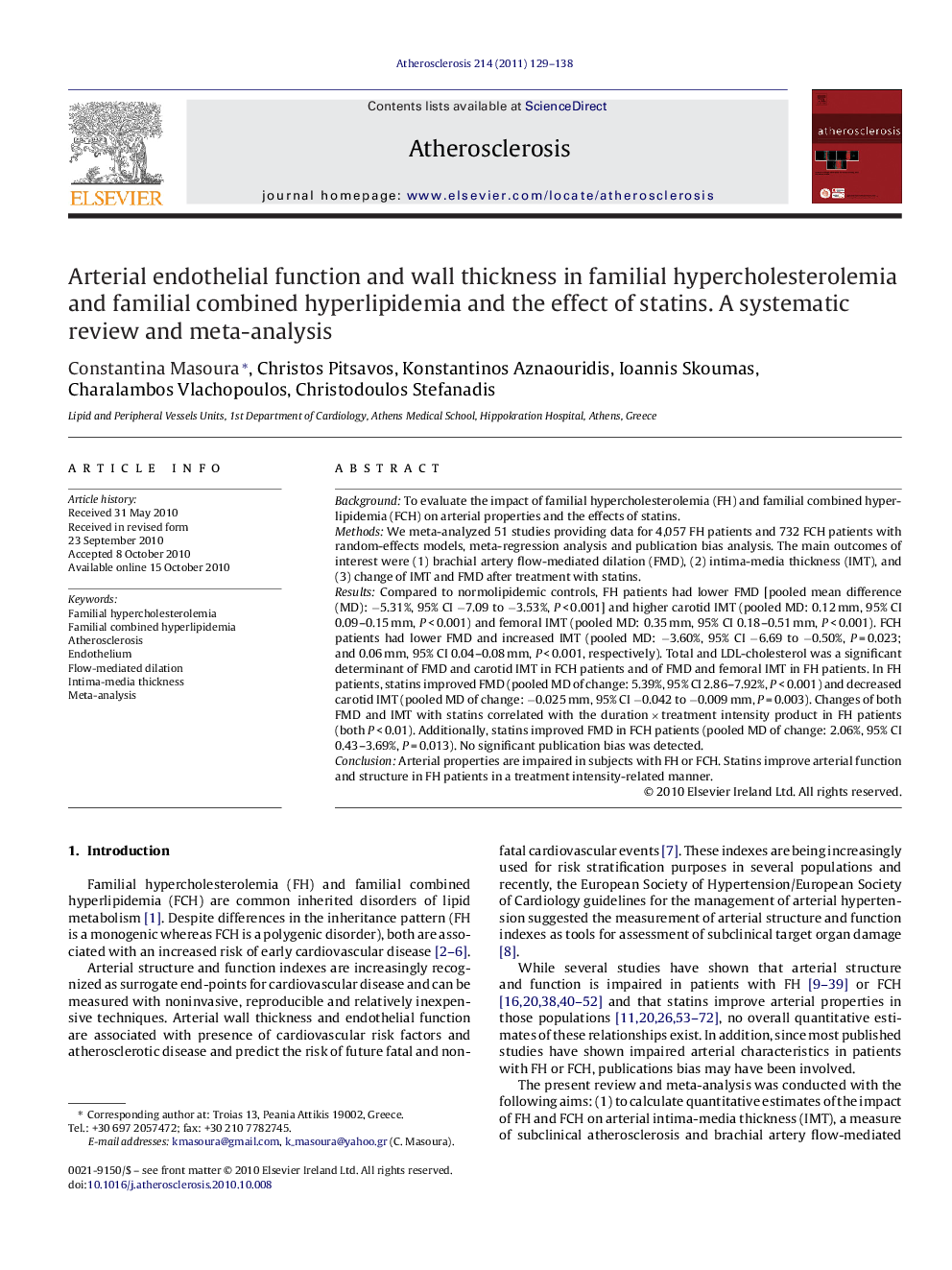| Article ID | Journal | Published Year | Pages | File Type |
|---|---|---|---|---|
| 5950437 | Atherosclerosis | 2011 | 10 Pages |
BackgroundTo evaluate the impact of familial hypercholesterolemia (FH) and familial combined hyperlipidemia (FCH) on arterial properties and the effects of statins.MethodsWe meta-analyzed 51 studies providing data for 4,057 FH patients and 732 FCH patients with random-effects models, meta-regression analysis and publication bias analysis. The main outcomes of interest were (1) brachial artery flow-mediated dilation (FMD), (2) intima-media thickness (IMT), and (3) change of IMT and FMD after treatment with statins.ResultsCompared to normolipidemic controls, FH patients had lower FMD [pooled mean difference (MD): â5.31%, 95% CI â7.09 to â3.53%, P < 0.001] and higher carotid IMT (pooled MD: 0.12 mm, 95% CI 0.09-0.15 mm, P < 0.001) and femoral IMT (pooled MD: 0.35 mm, 95% CI 0.18-0.51 mm, P < 0.001). FCH patients had lower FMD and increased IMT (pooled MD: â3.60%, 95% CI â6.69 to â0.50%, P = 0.023; and 0.06 mm, 95% CI 0.04-0.08 mm, P < 0.001, respectively). Total and LDL-cholesterol was a significant determinant of FMD and carotid IMT in FCH patients and of FMD and femoral IMT in FH patients. In FH patients, statins improved FMD (pooled MD of change: 5.39%, 95% CI 2.86-7.92%, P < 0.001) and decreased carotid IMT (pooled MD of change: â0.025 mm, 95% CI â0.042 to â0.009 mm, P = 0.003). Changes of both FMD and IMT with statins correlated with the duration Ã treatment intensity product in FH patients (both P < 0.01). Additionally, statins improved FMD in FCH patients (pooled MD of change: 2.06%, 95% CI 0.43-3.69%, P = 0.013). No significant publication bias was detected.ConclusionArterial properties are impaired in subjects with FH or FCH. Statins improve arterial function and structure in FH patients in a treatment intensity-related manner.
